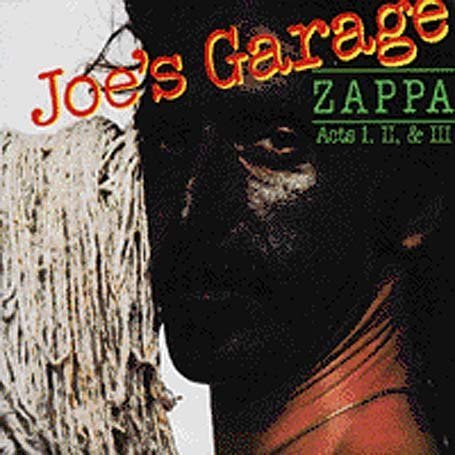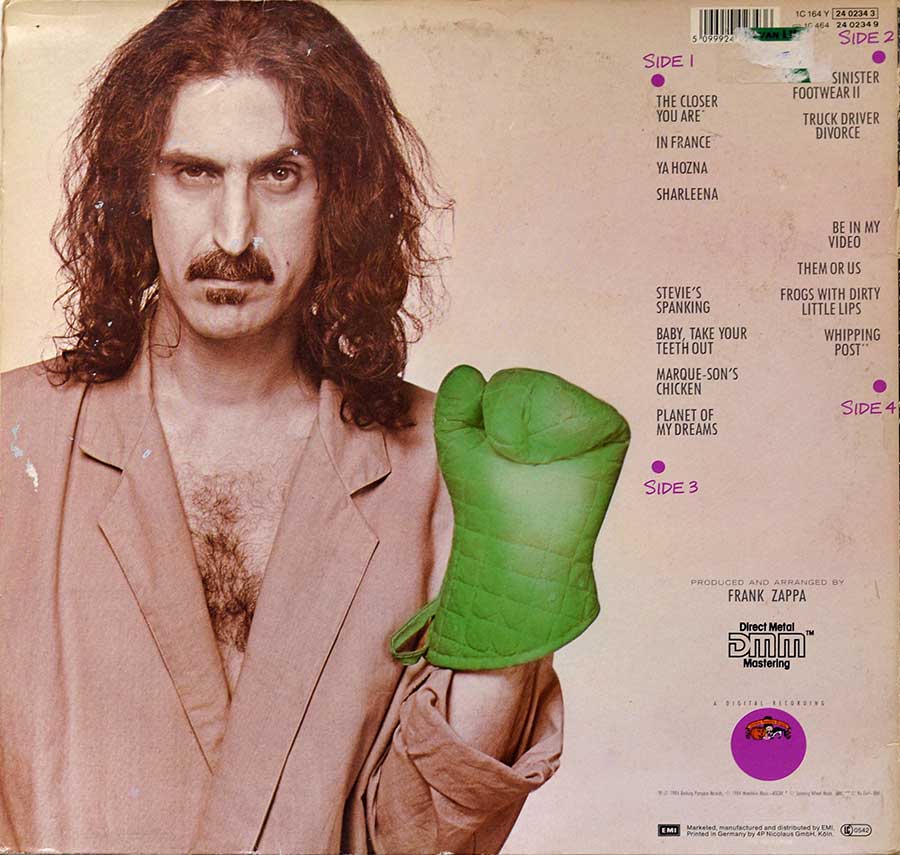

- #FRANK ZAPPA ALBUM FLOW CHART MOVIE#
- #FRANK ZAPPA ALBUM FLOW CHART FULL#
- #FRANK ZAPPA ALBUM FLOW CHART SOFTWARE#
#FRANK ZAPPA ALBUM FLOW CHART SOFTWARE#
He even envisioned both the subscription model (royalty payments and consumer billing were “built into the software of the system”) and a very Pandora-like option of “special interest categories.”
#FRANK ZAPPA ALBUM FLOW CHART FULL#
Zappa’s pitch addressed all of these concerns by proposing to store the best of the labels’ catalogs “in a central processing location, and hav them accessible by phone or cable TV, directly patchable into the user’s home taping appliances.” Yep: Prior even to home computers, Zappa envisioned a server full of music ready to move down your phone or television cable. This was the original music piracy, so much so that the British Phonographic Industry designed a “ Home Taping Is Killing Music” logo that looked like a Jolly Roger pirate flag. Home taping was the era’s boogeyman, the trend that was going to destroy the music industry. Which brings us to the final thing on Frank’s mind: home taping. That aside, Zappa’s point remains true that the labels’ own “vaults full of (and perpetual rights to) great recordings by major artists in many categories which might still provide enjoyment to music consumers if they were made available in a convenient form.” There were other problems on Zappa’s mind, one of which was the major labels’ focus on “the latest and greatest of whatever the cocaine-tweezed rug-munchers decide to inflict on everybody this week.” This is an almost quaint idea now, the notion that the labels are more interested in promoting new music than annually re-releasing the same Pink Floyd and Led Zeppelin albums in ever more deluxe editions. As a label boss, he was concerned with shipping costs and quality control, which “for the stamping of discs is an exercise in futility.” He conceded that CDs may eventually reduce shipping costs and “solve the warpage problem” with albums, but both manufacturing and retail costs of the new technology represent liabilities in Zappa’s proposal. Ordinary phonograph record merchandising as it exists today is a stupid process which concerns itself essentially with moving pieces of plastic, wrapped in pieces of cardboard, from one location to another.

Zappa entitled this idea “A Proposal For A System To Replace Phonograph Record Merchandising,” and he opened with this: We can pinpoint roughly the timing of the following proposal because the author notes that “CDs weren’t even on the market” and that CD players were “in the seven-hundred-dollar price range.” This suggests that Zappa’s flash of brilliance (or failure) came after the October 1982 release of the Sony CDP-101, the first commercial CD player (list price $730), and March 1983, when Billy Joel’s 52nd Street became the first widely released compact disc. Show-Me’s desk made it all worthwhile - a guy’s gotta have a hobby. It’s a fairly normal condition.” Zappa writes:Įven though flopped, the very idea of walking into a corporate office and dropping one of these boogers on Mr. Late in the book, Zappa includes a chapter entitled “Failure,” where he provides “excerpts from actual proposals, presented to guys with suits on, in The Real World.” Why would he highlight his failures? To demonstrate that “failure is nothing to get upset about. As his own label boss, he was acutely aware of the costs involved in recording and distributing music, and his political acuity is well-known.Īll of these threads came together likely somewhere between October 1982 and March 1983. When it came to technology he was an early adopter, most notably of the Synclavier, an early synthesizer on which he composed many of his works. He hired only the most accomplished musicians, but preferred working with machines, which “don’t get loaded, drunk or evicted and don’t need assistance moving their families around in ‘emergency’ situations.” Zappa was a fiercely intelligent individual who loved stupid humor. One would be hard pressed to find a more enigmatic figure in the history of popular music. “One would be hard pressed to find a more enigmatic figure in the history of popular music.” The book is sort of a memoir, but much like a Zappa song it wanders into whatever weird territory its creator feels like visiting. I’m talking about the internet, of course: downloading, streaming, piracy.īack in 1989 Zappa published The Real Frank Zappa Book, co-authored with Peter Occhiogrosso. Not only would that make a great plot for a Frank Zappa song, but it describes perfectly Zappa’s role in The Thing That Ate the Music Industry. Bob and Tina never listen to him, though, so they take a moonlight stroll to Bikini Beach with a sixer and a doobie, only to be hacked to death by a chainsaw-wielding maniac.
#FRANK ZAPPA ALBUM FLOW CHART MOVIE#
There’s always that one guy in every horror movie who sees what’s coming.


 0 kommentar(er)
0 kommentar(er)
